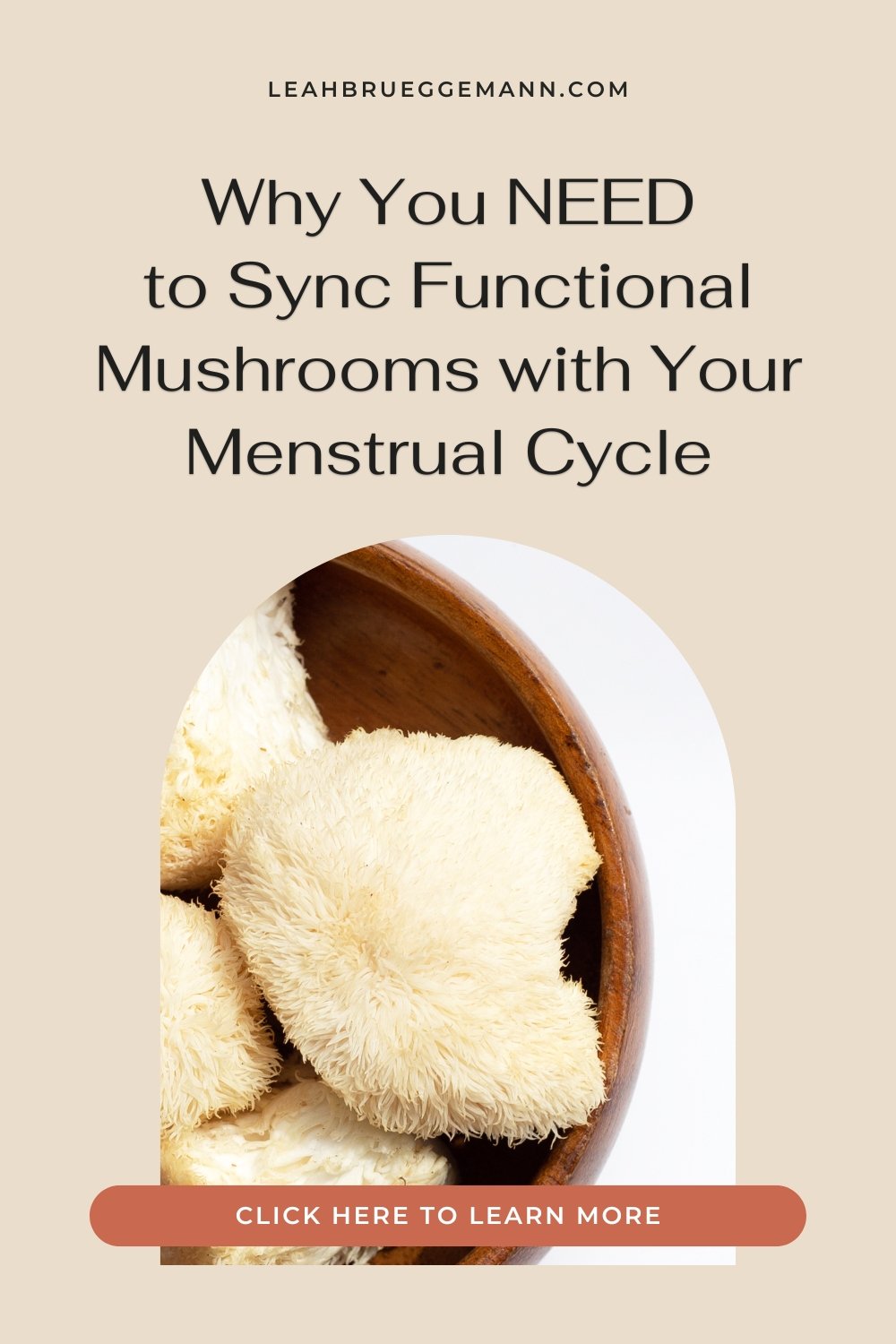Is the Position of Your Uterus Affecting Your Period? Pelvic Floor Q&A with Dr. Angie Mueller
Pelvic Health Series with Dr. Angie Mueller
Addressing Pelvic Floor Dysfunction: Do You Need a Pelvic Floor Therapist?
Is the Position of Your Uterus Affecting Your Period? Pelvic Floor Q&A with Dr. Angie Mueller
In part 2 of this two-part pelvic health series, we have a special Q&A with Dr. Angie Mueller! After having Dr. Angie on the podcast multiple times, we’re answering the top questions we have gotten, such as how the position of your uterus can affect your period and what you can do about it.
Pelvic Health Q&A
Is incontinence during pregnancy something to worry about?
If you experience incontinence during your pregnancy but then it goes away after you deliver, it could be that the weight of a baby growing inside you put pressure on your pelvic floor muscles but the muscles weren’t strong enough at that point to perform their function. So once you deliver, that pressure has been released and things are better.
But still, that’s not ideal. It's common, it's typical, but it's not ideal.
“I would encourage you to look at your lifestyle, and your exercise routine and your posture and your breathing, and see how that might impact your symptoms.”
Can my uterus’s position affect my period?
Our first question was mentioned already - could spotting about a week after your period ends be a sign of pelvic floor dysfunction?
As far as the muscular system goes, spotting after your period could indicate that your uterus is not in its best position. During your cycle, your uterine lining needs to build up throughout the month. If the uterus is in its best position, the lining will build up symmetrically all around the uterus. Then when it's time to bleed, the uterus - in its ideal position - will hopefully have efficient contractions, your bleeding will start and end red, you won’t have much pain, and the whole thing will last just a few days.
But if the uterus is not in the best position, it won't be able to build up the lining symmetrically throughout the month and won't have the appropriate position to have uterine contractions during bleeding to allow all of the lining to be shed. This is also then influenced by your hormones, your diet, and your lifestyle.
Dr. Angie also answered questions about brown blood during your period which is a pretty similar answer.
“My whole life until, probably seven years ago, I had always started brown and ended brown and my cycles were all irregular. And this whole idea that you should start red and end red. I was like, ‘How is that even possible?’ But truly, after positioning your uterus with these protocols that I teach, which is an abdominal massage, and very specific breathing and partial techniques, when your uterus is in her best position. Yes, your period starts red and ends red.”
So why do you have old blood? It's because the uterus is a muscle and if it’s out of place that muscle can’t adequately contract to shed all of the blood. So some of the blood stayed inside the uterus and then oxidized and is then contracted out during your next cycle.
Next up Dr. Angie addressed flow stops and starts during your period.
This is a good question - someone asked, “My flow always stops on day four of my period and then it starts up again on day five. Every time. Is that a progesterone issue? Or is that a positioning issue?
And the answer to this shows us the reason that finding a specialist or a team to work with is important because the answer isn’t a simple yes or no. It could be both but we need to look deeper into your specific health to understand the context.
From a hormonal stance, it could be a drop a of progesterone that isn’t lining up with the change in estrogen. And from a pelvic floor point of view, it could be your uterus changing positions during your period.
“My question would be what's going on on day four? And are your periods painful? Because if they're really painful, you're probably changing your posture and your breathing because you're in pain.”
What about fertility?
Our last uterus question has to do with fertility. So we want to know if positioning your uterus before sex increases your chance of pregnancy.
“100%. Now, of course, there are other factors influencing that.” But if you're thinking of it from a uterine position perspective - if your uterus is in an ideal position, it’s getting adequate blood flow, lymph flow and nerve flow, and hormonal regulation, and it’s getting optimal levels of oxygen. All of this is definitely going to increase your chances for pregnancy.
Again, it's just a part of the puzzle. My clients tell me they’re eating all the right things and balanced their hormones. But sadly I see a lot of miscarriages with tipped uteruses where it just didn't get a strong implantation. So there are things you can do to help that.
We want to create an environment for healing and wellness within the body. It's not just exercises and muscle and fascia. We have to think of the whole environment, the physiological environment in the body will also result in optimal muscle function and hydration of that white connective tissue that supports your uterus.
So, can you adjust the position of my uterus?
“Unfortunately, not every physical therapist is trained in this and I did not learn this in PT school. I also did not learn this through all of my fellowship and internship training with women's health specialists through the accredited specialization programs that I took.”
Dr. Angie learned about uterine position through indigenous medicine, primarily from the Abdominal Therapy Collective.
“I first figured out the importance of uterine position through a nurse practitioner that I was working closely with. We shared a lot of patients and she practiced a lot of indigenous medicine. She did a lot of spiritual healing and brought that into her Western women's health practice.”
She suggested that Dr. Angie could even better results for her patients if she worked on the position of the uterus. At first, Dr. Angie was skeptical but respected the professional opinion so she took a course about self-abdominal massage from her colleague.
“And it was a game changer in my own body. And then, of course, I started teaching all of my patients this.”
Through self-abdominal massage, you can reposition your uterus yourself. And this was an absolute game changer for Dr. Angie’s pelvic floor patients. They needed fewer sessions, and they weren't reliant on her to release their pelvic floor muscles.
“I discharged patients a lot sooner and they weren't coming back to me as much. And so that was huge. So I started to realize, okay, this is so important, the position of the uterus. And now, when you position it with just your hands with just a massage, it's this very passive method. And it usually takes just three months to start seeing results”
After seeing such fantastic results, Dr. Angie realized there must be more she could do. Since we're always working against gravity, being upright brings your uterus down. And so he knew there has to be something more active to position the uterus.
“So then in my research, I found a method out of Spain called hypopressive training. And I learned this postural and breathing method that actually lifts and centers the uterus through eccentric activation of all the fascial planes in the body. So I studied in Spain for a couple of months and continued taking courses on this.”
So hypopressive training was the final key. This is the active, exercise-based way to position the uterus.
“So then I started bringing in the hypopressive training into my treatment protocols with patients, they were getting better in just a couple of weeks. They were seeing changes, almost immediately, which sounds insane, but after a session of breathing like this, they start to notice changes in their posture and the lightness in their pelvis. So putting these two methods together was really truly the game changer. And the combination of these two methods is what allowed me to do virtual pelvic floor treatments.”
And that sounds crazy, right? Virtual pelvic floor therapy? If you have a good pelvic floor physical therapist, if you're seeing them in person, they should touch you, they should put their hands on you and assess you and release your muscles and they should be working on your body with their hands. Because, as we know most of your pelvic floor muscles aren’t voluntary so they should be activating and releasing them with you.
But if you can't do that with somebody, the next best thing is teaching them uterine positioning through self-abdominal massage. And this postural and breathing protocol is called hypopressive training.
“Combining these two methods with my patients, in person at the time, I started to realize I actually don't need to release their pelvic floor anymore. I don't need to release trigger points in your pelvic floor anymore. I don't need to adjust your spine anymore. If you just do this postural and breathing protocol, if you just do your breathing exercises and do this massage, I no longer needed to do as much manual, physical manipulations of their bodies.”
So when Dr. Angie moved, her patients wanted to continue working with her so they went virtual, and as skeptical as Dr. Angie was, it worked phenomenally! Her patients kept seeing fantastic results and then there was a huge demand for one on one sessions.
“And a lot of what I teach patients in these one-on-one sessions is actually the same thing for all these different pelvic issues - incontinence, urgency, frequency, menstrual irregularities, sexual dysfunction, constipation, back pain, tailbone pain, hip pain, dialysis prolapse, and so on. So all of these, like core issues that I'm treating, actually can be rehabilitated with the same protocol.”
So that's what led Dr. Angie to create her online program, The Core Recovery Method®. “There's only so much time for one on one. So I really had this strong intuition that I need to spread this message. Women need to know these really simple techniques that can help so many different things that we commonly struggle with.”
This is the kind of passion we love to see in functional medicine. Because really, functional medicine is the worst business model you have to be in it for the love of healing and sharing your knowledge because if you do your job well, you’ll never see that patient again.
And it's much more cost-effective for the patient because even if you have insurance, it doesn't always cover physical therapy or pelvic floor therapy. Or you might not be able to take time off to go to physical therapy during work hours. Or maybe you don’t even have a pelvic floor specialist in your area. So I love that Dr. Angie has found a way to translate this knowledge and education into a course that is available to anyone in the world on any schedule.
Next Steps
It’s so important to find specialists who understand and want to work with you on your health as a whole, rather than prescribing a pill. We talk a lot about this on the Balancing Hormones Naturally Podcast - that your health protocols and plans need to be based on a very personalized understanding of your body and lifestyle.
We also dive much deeper into this within the Hormone Reset Premium Access Program. Inside Premium Access, we look at your individual lifestyle and your labs and develop a completely personalized protocol to address your needs.
Free 3-day video series!
Get instant access to the free training.
If you are struggling with painful periods, hormonal migraines, and losing weight, this training will help you take the next steps on your health journey.
The recommendations presented in this blog are not a substitute for medical advice from a qualified doctor. Before making any changes to your diet and lifestyle, please consult with your health care provider.
Some of these links contain affiliate links.



